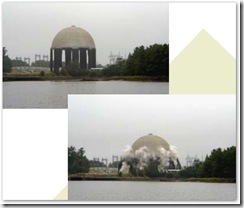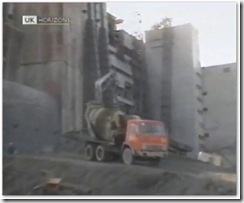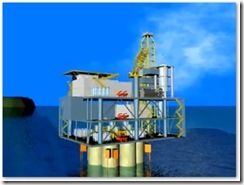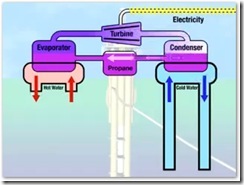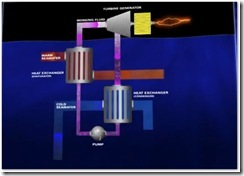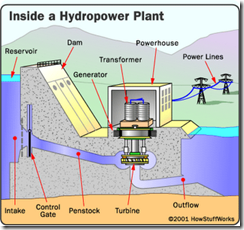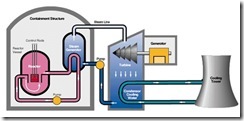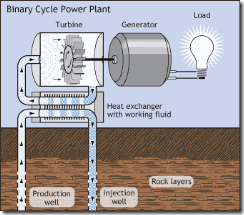5/4/2011修改版
地球變暖, 氣候的極端轉變, 水浸愈來愈厲害, 颱風愈來愈颳得勁. 林區山火愈燒愈廣, 太平洋小島不見了. 海產愈來愈小, 食物又愈種愈小了. 地球變暖, 已經死了多少人了??? 除了非洲有每天成千上萬人死於飢荒, 還有那些颳颱風, 水浸和林區大火又死了多少人?
另外煤礦石油工業每年又死傷多少人呢???
以下是我找到的死亡數字:
Climate-change disasters kill around 300,000 people a year and cause about $125 billion in economic losses, mainly from agriculture, a think-tank led by former U.N. Secretary General Kofi Annan reported Friday.
-
The Global Humanitarian Forum also estimated that 325 million people are seriously affected by climate change — a number it says will double by 2030, as more people are hit by natural disasters or suffer environmental degradation caused by climate change. 地球變暖, 每年死30萬人, 1千2百50億元經濟損失! 3億2千5百萬人口將受自然災害所影響, 而會在2030年,數字甚至會升倍.
-
Hurricane Katrina 2005 USA, At least 1,836 people died in the actual hurricane and in the subsequent floods, total property damage was estimated at $81 billion (2005 USD). 美國2005 颱風Katrina 最少死1836人, $810億美元的財物損失.
2010 Pakistan floods affected about 20 million people, mostly by destruction of property, livelihood and infrastructure, with a death toll of close to 2,000. 巴基斯坦水浸 2010: 2000死亡, 2千萬人無家可歸.
more than 100,000 coal miners were killed in accidents over the past century. 以往因煤礦意外而死的有10萬人了.
As many as 20000 miners die in accidents each year. 死於煤礦工業意外每年有2萬人.
There are approximately 753 deaths in oil spill accidents 死於石油工業意外有7百5十3人.
(備註: 石油工業不單死人, 看: the oil spill history, the deepwater horizon oil spill and the Oil spill disaster. 它是做成世界最大污染又極難清理的人禍!)
about 200 Liquefied Natural Gass workers were killed in accidents over the past century 以往因液化天然氣工業意外而死亡的有200人了.
Victorian Bushfires 2009 -173 people died and 414 were injured as a result of the fires. The Bushfires Royal Commission gave a "conservative" estimate of the total cost of the Black Saturday bushfires of A$4.4 billion. 澳洲維多利亞省黑色星期6林區大火, 173人死亡, 414人傷, 經濟損失為澳幣 4.4 billion.
然而:
以美國的three mile island 5級漏輻射 無人死亡, 蘇聯的chernobyl 7級漏輻射31死亡, 到現在的福島5級漏輻射無人死亡(至昨31日號為止). 備註1.
Comparing deaths/TWh for all energy sources
| Energy Source | Death Rate (deaths per TWh) |
| Coal – world average | 161 (26% of world energy, 50% of electricity) |
| Coal – China | 278 |
| Coal – USA | 15 |
| Oil | 36 (36% of world energy) |
| Natural Gas | 4 (21% of world energy) |
| Biofuel/Biomass | 12 |
| Peat | 12 |
| Solar (rooftop) | 0.44 (less than 0.1% of world energy) |
| Wind | 0.15 (less than 1% of world energy) |
| Hydro | 0.10 (europe death rate, 2.2% of world energy) |
| Hydro - world including Banqiao) | 1.4 (about 2500 TWh/yr and 171,000 Banqiao dead) |
| Nuclear | 0.04 (5.9% of world energy) |
依上表看來, 煤礦/石油/天然氣等工業意外死亡的人每年是數以千萬計的.
我之前也提出過(上表)的電力成本表, 依以上看, 緑色(construction建設成本), 橙色(production產量) 黃色(decommissioning退役). 很明顯核能的建設成本和產量跟煤礦相近的 (當然你會說那不如選自然氣喇, 建設成本跟核能差不多, 但產量最高啊!!! 可是啊, 散放出最多CO2的是棕煤, 隨著是黑煤, 排第3是自然氣. 舉例來說以10層樓來計, 棕煤是在10樓, 黑煤在9樓, 自然氣則在8樓了. 可是核能則會是0樓地下.). 這是為什麼美國, 法國和日本都專註在核能發展上. 其他如風力, 太陽能和水力, 我覺得他們受較多的限制(比喻, 雲多下雨便沒太陽了, 風不颳就沒有風. 而不下雨又沒有水力)真的不是理想的電力可以供應全球使用!
在上星期一的3月21日的ABC Four Cornres 節目中, 主持Kerry O'Brien為了福島核電廠因地震和海嘯而爆炸漏輻射的意外而訪問了John Carlson. 這段訪問非常尖銳和精彩, 問題和答案都值得一看:
土豆: http://www.tudou.com/programs/view/vhBDVHtqXtA/
(以下是我很簡單隨意的翻譯, 大家如果英文好的, 最好看影片和以下的英文transcript)
KERRY O'BRIEN: There are huge stakes in play for the world's most powerful governments and for the nuclear power industry, not to mention the public at large, as the full implications of the Fukushima nuclear crisis are becoming clearer.
Resource-poor Japan itself now relies on the nuclear option for one third of its power, a vital part of its economic lifeblood, and South Korea is even more reliant. China has a medium term goal of 15 per cent nuclear power, India is also on the nuclear road, and emerging countries like Vietnam and Indonesia are planning a partly-nuclear future.
America has more than 100 nuclear reactors, most three decades or more old, but after a long hiatus America is now talking about more nuclear power, not less. Europe is heavily committed with 30 per cent on average coming from nuclear - in France it's nearly 80 percent. Meanwhile the environmental movement remains largely anti-nuclear, despite the argument that nuclear has to be part of an effective solution to global warming.
So there have been a lot of vitally interested spectators around the world watching the drama unfold. John Carlson is one of them. For 21 years he headed the Australian Safeguards and Non-Proliferation office and chaired the International Atomic Energy Agency's advisory group on safeguards for five years. He's now a counsellor with the Washington-based Nuclear Threat Initiative and a visiting fellow with the Lowy Institute. I spoke with him from our Washington studio earlier today.
John Carlson, what is your worst fear scenario related to civilian run, or nuclear power plants run for civilian purposes? 民用的核電廠, 什麼情形下會使你最擔心的呢?
JOHN CARLSON, AUST. NUCLEAR SAFEGUARDS OFFICE 1989-2010: I think we've just about seen it, Kerry. I can't imagine anything worse happening. People think back to the Chernobyl accident and a number of commentators were predicting that this would be like Chernobyl. The technologies are just so different and the driver for releasing large amounts of radiation simply isn't there with a light water reactors. 我想我們剛看到了, 人們回想起chernobyl 核電廠意外了, 連評論家都認為這跟chernobyl 意外相似, 然而兩者的技術根本是不同, 很明顯日本核電廠用的light water reactors輕水反應堆的驅動器driver 釋放大量輻射是不會存在的.
So I think, basically, we've seen the worst scenario and it's turned out to be not the nightmare that many people thought it could be. That's certainly not to be complacent and clearly there's going to be a lot of work analysing what happened and learning and improving safety systems but I think basically the technology has shown itself to be very robust. 最壞的情況已看到了, 而且並不如很多人想像中的夢魘般. 這當然是不能滿足大家的, 肯定還有更多分析工作的需求, 學習和改變安全系統. 不過, 基本上, 技術上已証明它很堅固的.
KERRY O'BRIEN: Really? You can say that, robust, given the pictures we've seen, the explosions that took place? 可是我們看到它爆炸啊, 什麼可以說成堅固?
JOHN CARLSON: Well, you have to look at in terms of two things - first of all, what was the actual impact on public safety? And secondly, I think in any kind of analysis we do of nuclear energy we have to compare it with other energy sources and the risks and benefits and limitations of other energy sources. 兩事項你要看的 – 1. 什麼是實際地影響了公眾的安全. 2. 我們在做核能任何種類分析時, 都應與其他能源在風險, 優勢和來源限制等去比較的.
I think if you look at nuclear energy purely in isolation you'd probably conclude maybe it's best not to use it, but the fact is there's no perfect way of generating electricity and we have to take an objective look at pros and cons on a comparative basis. 如果你純粹單一只看核能(而不比較其他能源也帶給你災害時), 你很可能認為最好不用它. 可是事實是沒有完美方式去發電的, 而在比較的基礎上, 我們更加應該客觀去看正反兩面.
KERRY O'BRIEN: Even if the environmental exposure to radiation turns out not to be serious in this case, Fukushima does still throw up significant questions, doesn't it? Not least the policing of standards that nuclear power stations around the world, most of them run for profit. 雖輻射仍未做成極大的環境污染, 可是福島事件確實顯露了重要的問題, 不是嗎? 不僅是核電廠有嚴格監察標準在全世界, 但也不可否認這些核電廠也大多數是盈利運作的.
JOHN CARLSON: Any government with a nuclear industry will be looking very closely at the lessons and one of the issues is, is regulation good enough and is there a case for having more international involvements. One of the characteristics of nuclear safety is that it's very much regarded as a national responsibility. 任何政府有核能工業的將會非常關注這些教訓, 一個重要問題是, 是否監察足夠了, 有沒有一個案例是可以讓國際參與? 而一個特點是核能安全是較被視為國家責任.
There's an international convention, there are international standards, so that's quite a number of mechanisms, there's cooperation and experience sharing and peer review and so forth, but at the end of the day, it's a national responsibility. I think maybe it's time to think a bit more about that. 對的, 是有國際會議, 是有國際標準, 是有頗多機制的了, 也有合作經驗分享, 和同行評審等等, 但最終, 這仍是國家的責任. 我想也許是時候我們要考慮更多了.
KERRY O'BRIEN: We've just recently witnessed the Gulf of Mexico oil disaster where an independent presidential inquiry found that BP had put money before safety. Why would you expect the nuclear industry to be any different where the profit motive is at stake? It's true isn't it that the bad practice of one company or of even a government could potentially lead to a nuclear calamity? 在最近墨西哥灣BP事件中, 已証明了他們為了錢而莫視人命安全了, 難道你可以期望核能工業在謀利動機下會與他們不一樣嗎? 事實証明, 在這歪風之下, 很難保一間公司, 甚至一政府不會引至核災難?
JOHN CARLSON: I think that's very true and I wouldn't pin that on the profit motive. I'd agree with you that where there is a profit motive there may be a temptation by some to cut corners. I think what really matters is, who are the people who are actually operating the industry? What kind of training have they had? And particularly what kind of oversight do they get? I think you need a very strong regulatory system, whether it's a company that's running a facility or whether it's the government that's running a facility. 是的, 我想你所說是對的, 但我不會只釘著謀利動機上. 我讚同你說在謀利動機上, 將會有被誘惑而走捷徑挺而走險. 我想最重要的問題是什麼呢? 是什麼人在運作這工業, 他們受的是什麼訓練, 特別是他們受什麼樣的監管. 我想你需要一個非常強的監管系統, 不論你是一公司在運作設備還是一個政府!
KERRY O'BRIEN: Can you understand why public trust might be shaky when even a friend of Japan's like the United States was questioning whether we were being told the whole truth of what was going on at Fukushima? Where even the Japanese Prime Minister seemed to be less in the loop than one might have expected? 你可明白到公眾的信任已經動搖了, 連日本的朋友美國也發出疑問, 究竟日本是否講出福島核漏事實的真相? 就連日本首相也像被蒙在鼓裡似的.
JOHN CARLSON: I think in fairness to the Japanese, they were overwhelmed by a series of catastrophes, and this was an unprecedented event, the impact on a nuclear plant. A number of areas of the plant would have been off limits to staff because of high radiation levels. I think for quite a period nobody had any way of knowing what was going on. 我認為要對日本公平一點好吧, 他們受到一連串災難的打擊, 而且這是一個史無前例的事件, 沖擊了核電廠, 而肯定很大部份核電廠區域因核漏有高輻射而不準許員工進入, 這肯定做成一段長時間沒有人可以從任何途徑中知道究竟發生了什麼事!
It wasn't so much that information was being withheld but the information simply wasn't there. Clearly we have to develop better ways of knowing what is happening if we ever have a repeat of this kind of accident situation. 應沒什麼訊息可以被隱瞞, 因為根本也沒什麼訊息. 明顯, 我們必須尋找更好的途徑去知識究竟發生什麼事了, 如果我們日後會有同類的意外發生.
KERRY O'BRIEN: There is an irony I guess, isn't there, that as the rest of the world now reviews its nuclear future in the wake of Fukushima, Japan is now so dependent on nuclear power it will keep expanding its reliance on nuclear. With its whole economic future at stake, can Japan be trusted to be objective about what happened at Fukushima? 現在全世界又被福島核漏所驚醒了, 日本現在全依賴了核能發電, 肯定他們會持續並發展依賴在核能. 日本已經整個經濟都受到了威脅了, 日本會以福島危害的客觀上而應被信任嗎???
JOHN CARLSON: Kerry, I think nuclear energy will have to be a part of the energy mix in a wide range of countries, for a number of reasons that have not gone away post-Fukushima. We have to do better at protecting against the potential harmful effects but it's something that if we want to address issues like climate change effectively, we can't exclude it.
As to whether the Japanese can be trusted, I think that's a harsh question, although I could understand that a lot of people- 我認為核能是大部份國家的能源提供結構中的一環, 有很多原素支持它不會因福島意外而消失的. 我們必須做得更好, 以防止所有潛在災害影響, 可是如果我們要提到地球變暖, 那我們就無法將核能拒於門外了.
至於日本人是否可信, 在這時候, 那真是個冷酷不快的問題, 但我明白很多人會這樣問-
KERRY O'BRIEN: A lot at stake.
JOHN CARLSON: A lot of people might be asking it and I think that really points towards, is there a way that we should have more international involvement in national programs so that there's a better way of building confidence and building transparency in decisions that are taken and the way things are done. 我覺得重點應該轉向: 是否有途徑使得更多國際參與國家核能方案, 以使有更好的建立信任和更有透明度在決策上, 才是正確做事情的方法.
KERRY O'BRIEN: John Carlson thank you very much for talking with us.
JOHN CARLSON: It's a pleasure Kerry.
KERRY O'BRIEN: And that's the program for tonight.
Professor John Carlson 正正講出我所想的.
福島核電意外已經使到很多國家的綠黨或反核人士出來示威了! 我真懷疑他們對環保有多大的認識? 是否每年2萬平價煤礦工死士是沒關係的, 自己受癌威脅才是最重要的(甚至核電廠遠你住處很遠, 核電意外20年才一次)! 是否地球變暖的自然災害未殺到來自己身邊, 就可以不理? 人的自私行為莫過於此了.
再看, Professor Barry Brook 在 Our World Today 的訪問:
土豆: http://www.tudou.com/programs/view/vwXskjQf5RQ/
另外 Professor Barry Brook 也在以上的影片說了幾個重點:
1. 十年20年後, 我們根本再不能燒煤 (因為環境已經嚴重污染, 天氣變得更異常了, 全世界政府將不再容許再燒煤), 天然氣資源有限, 到那時電力價格一定上升厲害了. 請問如果依賴那些太陽能/風能和水力來供應幾百或幾千間屋的電力! 除了核能, 我們還可以什麼辦??
2. 日本3種電力資源(1. 煤, 2. 天然氣和核能源) 全是靠進口的, 而現時核能源 uranium是差不多日本1/3的電力來源(日本正計劃在2022年, 核能將要提供全島50%的電力), 這幾種電力資源在運輸上的比例是, 如果要運一船的煤或一船的天然氣, 那麼uranium就只是一小可隨身携帶的旅行箱!
3. 傳媒對核能意外未死1人卻誇大佈道, 日本天然氣庫爆炸死了快千人, 火燒氣體, 做成多少毒害在大氣之中散播, 卻沒有任何報導.
4. 中國電力能源75%來自煤, 可是為了地球變暖, 中國也開始大力發展核能, 而現時中國/印度的核電廠都是最新的科技. 日本也是建了最新科技的核電廠(1971年的科技, 與chernobyl 相比, 是先進得多了), 就是不幸被4公尺海嘯襲擊的那核電廠. 而看來如此大的災害, 而能夠做成的禍害不很大, 証明這技術是很堅固的. 而中國的核電廠, 技術更先進安全了.
備註1.當然很多人會提醒我但很多人得了癌症, 短壽, 畸形兒啊! 大家可去看一下世衛對chernobyl 意外20年後的研究報告. 詳細我不在此寫了.
備註2:
bushfires:
http://clearlyexplained.com/nature/earth/disasters/bushfires.html
http://candobetter.net/node/1355
oil drilling rig and spill accident:
http://www.facebook.com/topic.php?uid=53189336462&topic=14748
特別備註: 讀者喜歡看可隨便看! 不回應任何無禮貌, 無教養人士的問題!! 也謝絕他們到訪! 我們要環保! 這裡一直存有大量新鮮空氣!!! 


